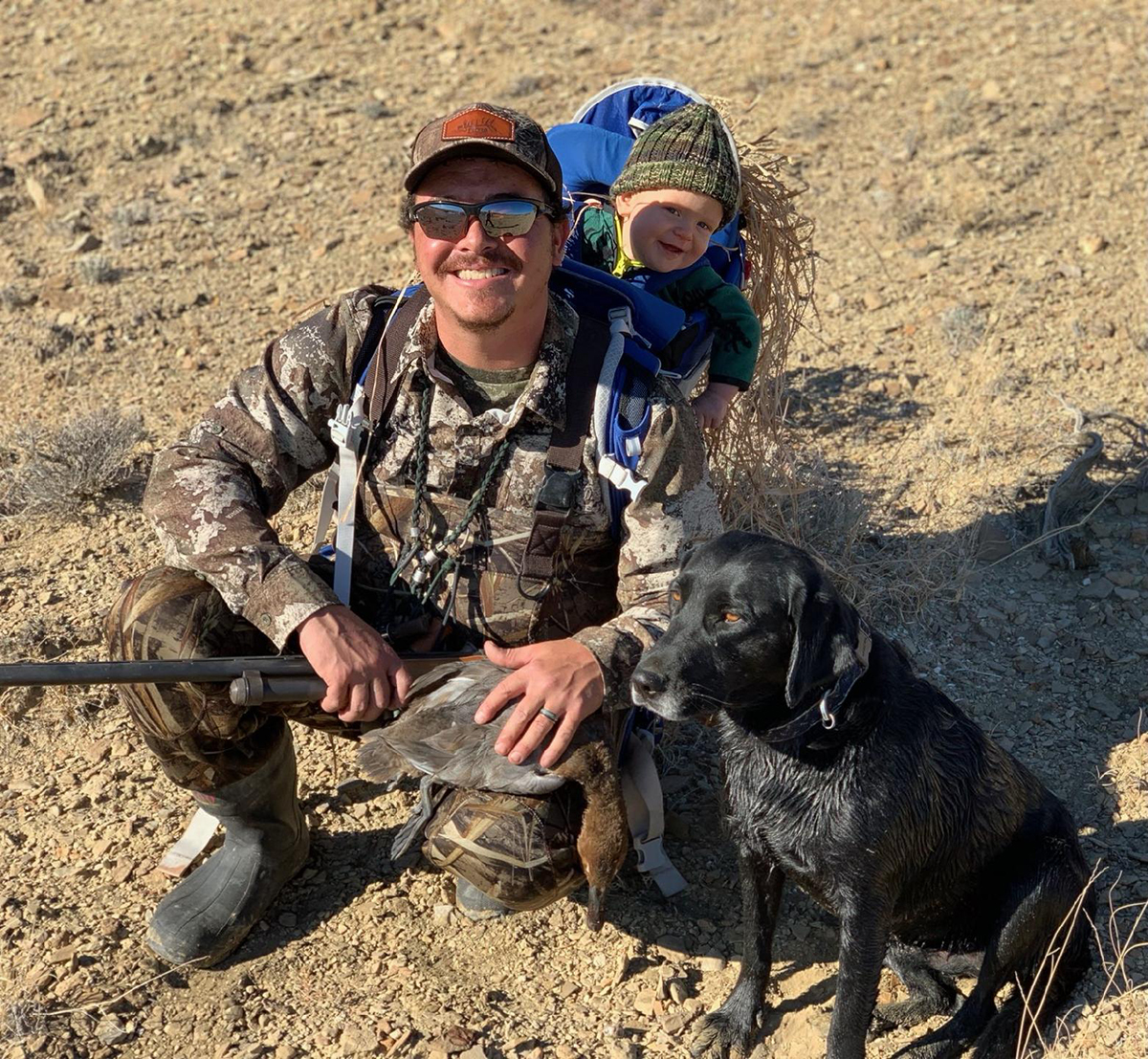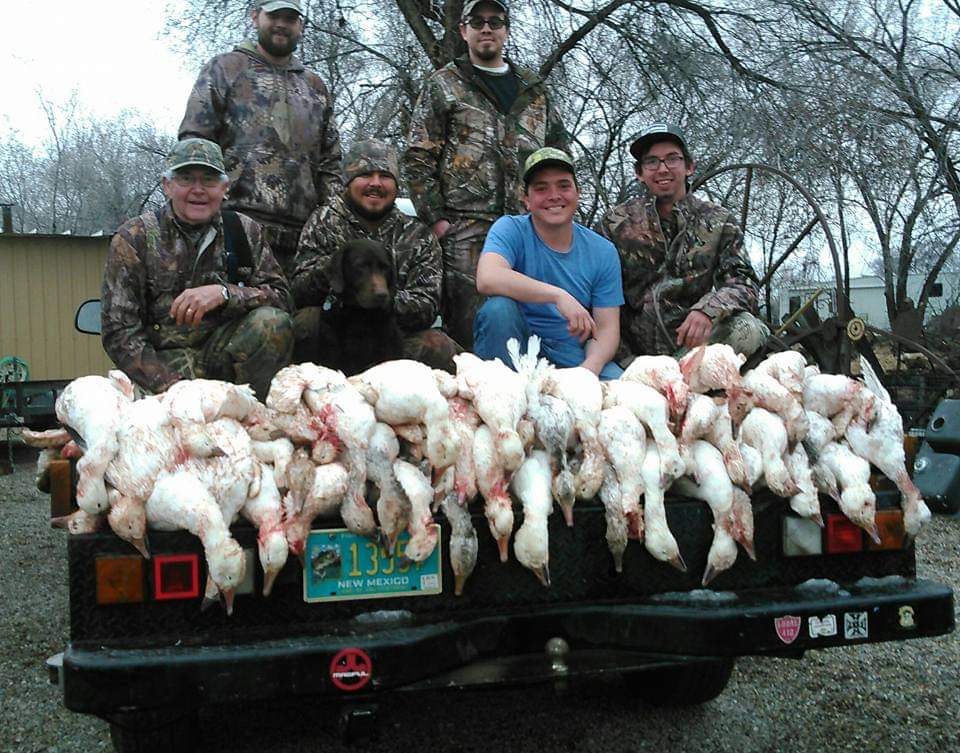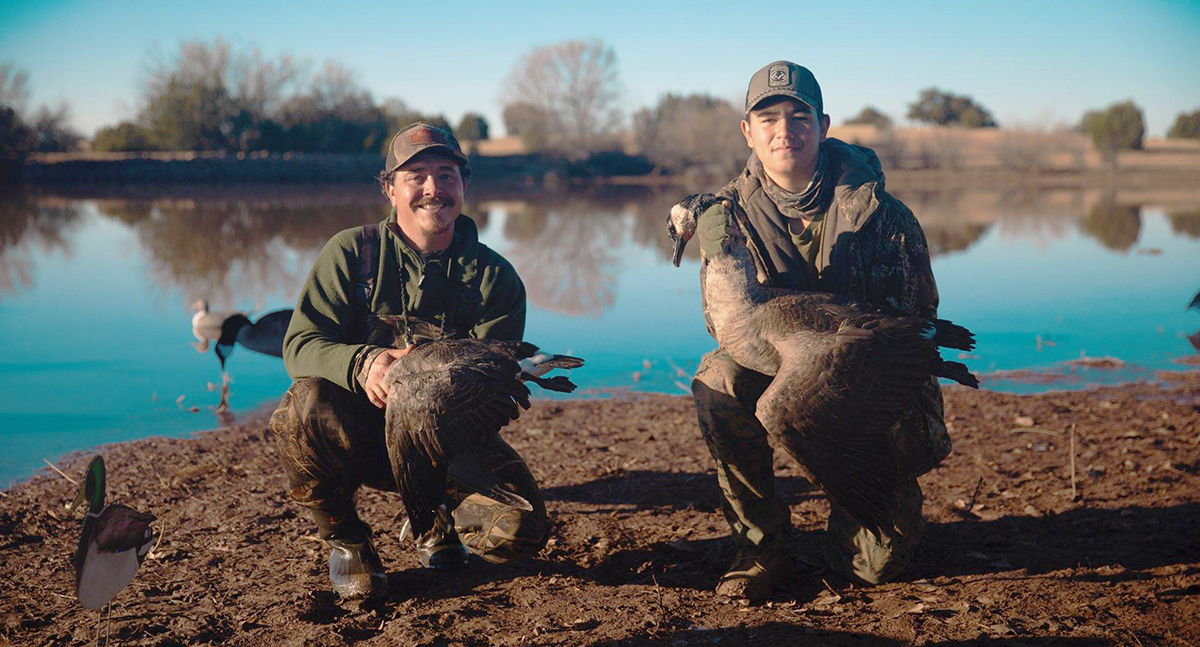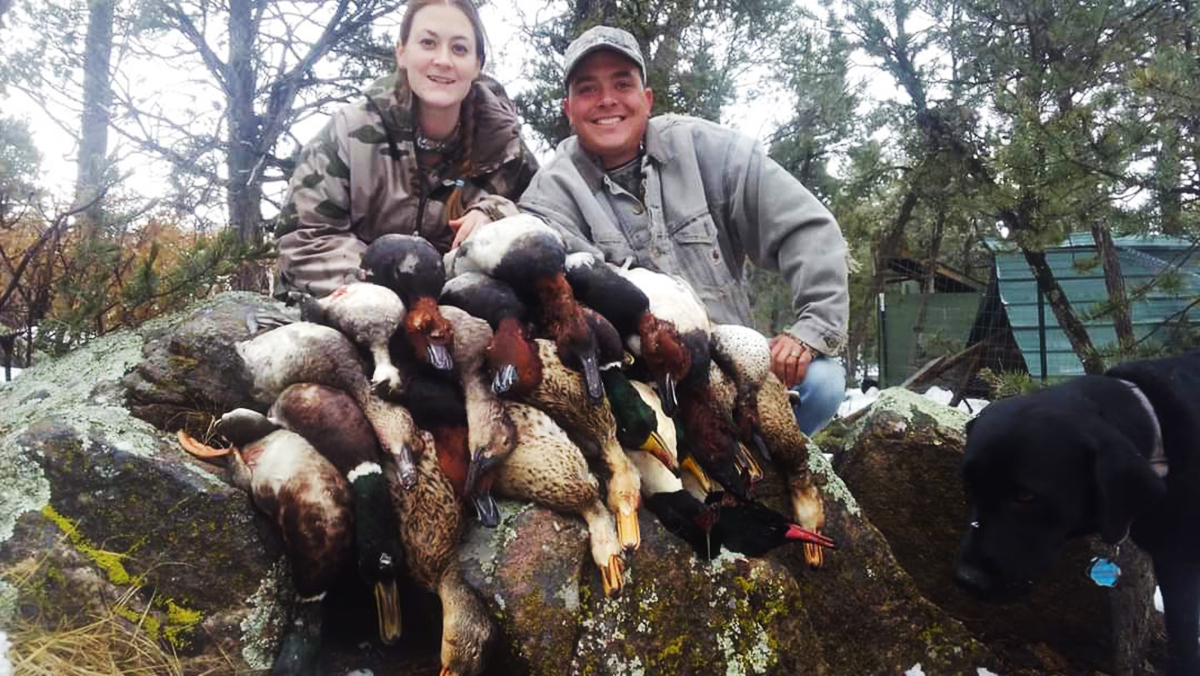postblog
Do you have any thoughts on this post?
Are you voting for conservation and access this November? Our decision-makers, especially at the state and local level, have a much greater influence on these issues than you might realize. From your county seat to Capitol Hill, decisions are being made every day that will impact the health of fish and wildlife habitat, the availability of access to outdoor recreation, and the many uses of our public lands.
Simply put, your vote matters. Here are just a few of the positions you could see on the ballot where you live and what role these officials play in conservation.
Here in Wyoming and in many states, county commissioners are tasked with making a variety of decisions that affect wildlife, including those relating to the management of county roads, local representation in BLM and Forest Service land-use planning processes, and zoning on private land. For instance, when weighing a proposal to change zoning for land that overlaps with known big game migration corridors, an informed commission can work with landowners to ensure development is undertaken with appropriate consideration for potential impacts on our elk, deer, and pronghorn herds.
Every state legislature will vote on critical wildlife and conservation bills each year. During the last session here in Wyoming, thanks to advocacy efforts from hunters and anglers like you, the legislature passed a $70-million increase to the Wildlife and Natural Resources Trust. This landmark conservation victory will support critical habitat work across the state for decades to come—and it’s just one example of the impact of our state lawmakers.
In the past, our legislature has also considered bills supporting the transfer of or restriction of access to public lands. While these efforts have failed in prior sessions due to the strong constituency of public land advocates in Wyoming, new attempts to steal our heritage continue to emerge. It’s a good reminder for sportsmen and sportswomen to stay engaged in the political process.
Your state’s congressional delegation can support the passage of meaningful conservation and access legislation with impacts close to home and across the nation. An example of this is the recently passed MAPland Act, which directs federal agencies to digitize and make publicly available access easement data to landlocked public lands. This bipartisan legislation will bring huge benefits to hunters and anglers looking for legal access to what once looked like inaccessible parcels.
“The first duty of an American citizen, then, is that he shall work in politics; his second duty is that he shall do that work in a practical manner; and his third is that it shall be done in accord with the highest principles of honor and justice.” – Theodore Roosevelt
Voting isn’t the only way to make an impact for conservation, of course. As residents of the least populous state in the union, Wyomingites are uniquely situated to build relationships with our state and local decision makers to drive important conservation policy, but anyone can become more involved in shaping policy by seizing a few key opportunities. Whether commenting at public hearings, meeting with your state legislators, writing letters to the editor, or volunteering with a conservation group like the TRCP, there are numerous ways to adhere to Theodore Roosevelt’s vision for conservation advocacy.
(I’m tracking these kinds of opportunities for folks here in Wyoming, so if you’d like to take action beyond a petition signature or paper ballot, please contact me here.)
It’s important to say that the TRCP doesn’t endorse anyone in an election. But we do work to educate candidates on what matters to hunters and anglers, so whoever is elected walks into their new role knowing how they can best serve fish, wildlife, public lands, and our community.
With the general election approaching on November 8, 2022, and the 2023 state legislative session coming in January, we’d like to see candidates in Wyoming work with us and our partners on the following issues.
Public lands, waters, and wildlife are central to our way of life in Wyoming. Any proposal to transfer or privatize these resources is a non-starter for sportsmen and sportswomen.
Science-based management guided by the North American Model of Wildlife Conservation has proven itself as the most effective approach for recovering and sustaining wildlife populations. Decision makers can build on our conservation legacy by supporting the state agencies and dedicated biologists who manage our shared wildlife resources.
In Wyoming, 4 million acres of state and federal lands are surrounded by private holdings with no legal means of public access. Lawmakers should support cooperative solutions—including funding for voluntary access agreements—that respect private property rights and open access to these landlocked parcels.
Public-private partnerships such as Access Yes have opened over 2.6 million acres of private land to hunters and anglers in Wyoming. Lawmakers can continue to financially benefit landowners who steward wildlife habitat while providing public access by expanding funding for these programs.
Wyoming’s robust big game populations and the hunting opportunities they provide are threatened by the spread of wildlife diseases such as pneumonia in bighorn sheep and Chronic Wasting Disease in elk and deer. To address these issues head on, wildlife managers need support and funding from lawmakers.
Migration corridors and winter range support wildlife abundance that maximizes hunting opportunities and supports our rich outdoor heritage. Wyoming Game and Fish needs the tools necessary to conserve these habitats on public lands while also providing financial incentives to landowners to voluntarily conserve key habitats on private lands.
Wyomingites recognize that many of our best wildlife habitats need continued investment in on-the-ground stewardship work, such as habitat restoration and invasive weed control. Continuing to expand and support state programs such as the Wildlife and Natural Resource Trust will secure essential funding for these projects, while improving access to federal matching grants: a win-win for Wyoming’s fish and wildlife.
Wyoming’s pronghorn populations are declining, as are hunting opportunities. Supporting science-based management and policies that conserve the sagebrush ecosystem will help recover pronghorn and support other species, including greater sage grouse and mule deer.
4.2 million acres of state trust land in Wyoming provide important wildlife habitat and opportunities for outdoor recreation, including hunting and fishing. By utilizing wildlife friendly options to generate revenue in appropriate areas—such as conservation leasing— decisionmakers can support public education and steward the landscapes and wildlife that drive tourism and outdoor recreation, Wyoming’s second largest economic sector.
Multiple-use management includes resource extraction, habitat stewardship, and outdoor recreation. Sportsmen and sportswomen support the balanced use of our public lands—which includes both responsible development and the conservation of our natural resources—so that future generations can experience the same opportunities we enjoy today.

More than 10,000 anglers and conservationists from Virginia and up and down the East Coast have signed a petition asking Governor Youngkin to protect the Chesapeake Bay from the negative impacts of industrial menhaden fishing. The petition is being delivered to Youngkin and the governor-appointed members of the Virginia Marine Resources Commission to push for meaningful conservation of menhaden, a critical forage fish species.
A coalition of 11 national and 10 Virginia-based groups teamed up earlier this year to demand regulation changes that would move menhaden reduction fishing out of the Chesapeake Bay and stop wasteful fish spills from fouling the state’s beaches.
Beyond signing the far-reaching petition, Virginia residents have also been showing up to VMRC meetings all summer to make public comments about how the menhaden reduction fishery is affecting their lives. According to Virginia code, menhaden regulations can only be changed from October to December, but menhaden are still not on the VMRC agenda for its October 25 meeting.
“Over 10,000 anglers, charter captains, and Bay-area residents have spoken, and they want the menhaden reduction fishery moved out of the Bay,” says Steve Atkinson, president of the Virginia Saltwater Sportfishing Association. “We are now waiting to see just how much the governor cares about these resources.”
The recreational fishing community is concerned that years of localized depletion from the annual harvest of over 100 million pounds of menhaden in the Bay has deprived gamefish like striped bass, bluefish, and weakfish of a critical food source. Atlantic menhaden play a vital role in coastal ecosystems by serving as the base of the food chain for larger fish, marine mammals, and seabirds. Yet, millions of pounds of these valuable fish are being removed from the Chesapeake Bay and “reduced” into fish meal and oil for pet food and salmon feed by a single foreign-owned company.
Menhaden are especially critical to striped bass and make up 30 percent of the popular sportfish’s diet. The striped bass fishery is the largest marine recreational fishery in the U.S., driving $166 million in recreational fishing activity in Virginia alone. However, the economic value of striped bass fishing to Virginia has declined by over 50 percent in the past decade.
According to the latest science, menhaden reduction fishing contributes to a nearly 30-percent decline in striped bass numbers coastwide. The detrimental impact of menhaden reduction fishing on the marine environment is so pronounced that it is outlawed in every other East Coast state. However, in Virginia, a single foreign-owned fishing company—Cooke Inc., locally known as Omega Protein—is still allowed to harvest over 100 million pounds of menhaden each year from the most important striped bass nursery on the East Coast, undermining the sportfishing economy and small businesses throughout the Commonwealth.
Omega boats have caused multiple Eastern Shore fish spills in 2022 alone, resulting in the waste of 12,000 pounds of red drum bycatch, but Virginia continues to allow this unsustainable practice. Virginia residents and East Coasters who vacation and recreate in the Bay are fed up.
“I am trying to give the residents who live on the Eastern Shore, as well as the guests and tourists who come to visit, a chance to let their voices be heard to express their disappointment and disapproval of menhaden reduction fishing,” says Christi Medice, an Eastern Shore resident who has gone door to door with a paper version of the petition. “This has given me the opportunity to talk to people about their concerns around dead fish washing up on the various beaches. I have over 1,500 signatures and am still getting more.”
An online petition hosted by the Theodore Roosevelt Conservation Partnership and promoted by local groups, including VSSA, has garnered an additional 8,900 signatures since June 2022. A policy change on industrial menhaden harvest near shore would serve both anglers and tourism businesses, while still allowing Omega to operate in deeper waters.
“Ninety-nine percent of inshore and near-shore gamefish depend on bunker at some point in their lifecycle,” says Captain Tyler Nunn, owner of Tidewater Charters. “Especially for the apex predators like striped bass, red drum, and cobia that my charter business and many businesses around the Bay depend on, the importance of menhaden is immeasurable. No one has seen the potential of the Bay with a healthier forage base. It would make magnitudes of difference in the sportfishing industry and the Bay’s ecosystem if we left more bait in the water.”
“When will decision-makers answer the many questions that have been raised about this company’s activities and choose the side of recreational fishing and coastal economic growth?” asks Jaclyn Higgins, forage fish associate at the Theodore Roosevelt Conservation Partnership. “It is necessary to implement commonsense regulations until the science demonstrates that menhaden fishing can be allowed without negatively affecting the broader Bay ecosystem.”
Click here to see the petition that fishing and boating groups have been circulating since June.
Click here for the coalition’s letter to Youngkin in June.
Click here for the letter from Virginia and East Coast businesses to Youngkin in September.
When it comes to creating wildlife habitat on private farms, ranches, and forest land, U.S. Department of Agriculture conservation programs are key. These programs are usually authorized and funded only once every five years, as part of the Farm Bill, but several programs recently received a huge one-time infusion of cash in order to boost their climate benefits.
When something like this happens, the hunting and fishing community needs to have a voice in how these dollars get put on the ground. Without our input, practices with no fish and wildlife benefit, or even those that are harmful to habitat, might be funded. That’s why the TRCP and 14 of our partners last week made recommendations to USDA leadership about the wise investment of private land conservation dollars from recently passed legislation.
These investments will empower America’s farmers, ranchers, and forest landowners to play an even greater role in reducing greenhouse gas emissions, sequestering carbon, and mitigating the impacts of climate change. Of equal importance, they do so within the time-tested and landowner-supported framework of locally led, voluntary, incentive-based programs.
To assist the USDA in maximizing the positive impacts of this once-in-a-generation opportunity, we offered the following principles and guidance.
Enhance Conservation Technical Assistance
When wisely applied, the newly available funding for Conservation Technical Assistance can produce substantial climate benefits. Qualified staff, who have earned the respect of their local communities, are essential for program success. We encouraged the USDA and NRCS leadership to work with State Technical Committees to identify where these technical assistance funds can be targeted to fill pressing agency staffing gaps and enhance program delivery. Additionally, investments in a broad suite of climate-smart agricultural and forestry practice training certifications, such as conservation planning and wetland delineation, and competitive staff compensation are all necessary to meet our climate and broader conservation goals. Finally, we recommend that USDA expand technical assistance resources to support external partnerships with government and non-government partners. These partnerships strengthen USDA’s landowner outreach capabilities and connect USDA Service Centers to broader external expertise and resources.
Prioritize Win-Win Practices
Many, but not all, current climate-smart agricultural conservation practices provide multiple benefits for wildlife, biodiversity, drought adaptation, and water quality, in addition to emissions reductions and carbon sequestration. These multi-beneficial practices, such as range planting, upland wildlife habitat management, riparian forest buffers, and riparian herbaceous cover should be prioritized, as should multi-beneficial practices that are not currently categorized as climate-smart, such as wetland restoration, wetland enhancement, and prescribed burning.
First, Do No Harm to Wildlife
Effective and practical climate-smart agricultural practices and supporting practices vary based on climate, soil type, and agricultural system. The NRCS should consider using regionally developed, ecologically appropriate practices and scenarios with guidelines and payment rates designed to effectively reach the goals stated in recently passed legislation. These lists should be vetted to maximize their climate benefit and avoid incentivizing practices that negatively impact fish and wildlife.
Remove Barriers to Implementation
To implement these generational investments equitably and with appropriate urgency, non-statutory match and cost-share requirements should be reduced or waived whenever necessary. These requirements are a barrier to implementation in many areas, but especially among historically underserved communities. The NRCS should immediately broaden their definition of significant partner contributions and reiterate that there are no financial match requirements within the Regional Conservation Partnership Program.
Boost Participation in the RCPP
This program has the potential to create innovative, partner-driven climate solutions, but is currently hamstrung by administrative barriers. To reach this program’s potential, alternative funding arrangements and granting authority should be emphasized, practice standards should be flexibly applied, and project agreement approval and renewals should be streamlined. In addition, Supplemental Partner Agreements should be used consistently. Currently, allocations are open to interpretation and costs associated with Hourly Rate Charges are unrecoverable, which discourages program participation.
Retain Existing Habitat with Easements
The value of conservation easements for achieving our nation’s climate goals can be best realized by recognizing that maintaining stored carbon, including on wetlands and grasslands of special significance, and avoiding conversion of farmland, ranchland, and forestland to residential and urban development are as important as creating additional sequestration. Targeted Agricultural Conservation Easement Program easement acquisitions will maximize the return on investment, as will using a portion of newly available RCPP funding to acquire easements.
Don’t Overlook the CRP
Despite its outsized potential for carbon sequestration and emissions reduction, the Conservation Reserve Program did not receive new funding in recently passed legislation. The USDA should work to fully implement the CRP through its existing authorities and should apply new funding to lasting grassland, wetland, and forest restoration and management projects through other programs wherever possible.
Boost Native Grasses
In all programs that did get a boost from legislation, there is a significant opportunity to increase the incentives for and the use of native plants, where ecologically appropriate, to increase climate resiliency, forage availability, water security, and provide habitat for wildlife and pollinators. USDA Plant Materials Centers play a key role in enabling these outcomes, as do local and community-based nurseries and seed producers, most of which are currently unable to meet demand. Support for these crucial research and production entities is needed to achieve our climate goals.
Don’t Slack on Compliance
Pressure to achieve ambitious goals may tempt staff to ignore conservation compliance requirements. USDA leadership should clearly and consistently communicate that Highly Erodible Land, Sodsaver, and Swampbuster provisions must be enforced in accordance with statute. Failure to do so will directly counteract efforts to reach our nation’s climate goals.
At the TRCP, we recognize that realizing this incredible opportunity will require a great deal of work and ingenuity within USDA and among partner organizations, and we appreciate the public servants who are making it happen. We also understand that investing these dollars to enhance on-the-ground conservation of private lands will be an adaptive process, and our staff stands ready to provide additional and more detailed support to decision-makers as they move forward.
Matt Monjaras is like many lifelong outdoorsmen—he found his passion for hunting and fishing at a young age, felt shaped by his experiences on public lands, and developed an appreciation for the solace he found while tuned into the pursuit of fish or game. But what makes Matt unlike many of us is his effort to give this gift to others in his community by spearheading volunteer conservation efforts, fundraising, and mentorship.
Here is his story.
I was born in Colorado but raised in New Mexico along the banks of the Rio Grande. From Las Cruces to Southern Colorado, I spent many lifechanging hours pursuing bullfrogs and catfish along the river. I was also lucky enough to spend summers with my uncle, where I’d be waist-deep in the San Juan River stocking trout and learning about aquatic habitats with the aid of a dry fly.
These days, I live in a small mountain home in the East Mountains of Albuquerque with my wife, Phoebe, and our two-year-old son, Carter. We are expecting our second child in November of this year.

I’ve visited countless public lands across the West, and these places carved their way into my dreams and life goals. Meanwhile, my father’s reminder that we only get one life to live has truly stuck to my soul. My connection to Mother Earth has not only shaped my direction—it continues to give my life more purpose with each passing day.
After high school graduation, I had about ten friends join the military and rush off to fight for the freedoms we continue to have because of their sacrifices for this great country. That year, I fell in love with waterfowl hunting along the banks of the Animas River in Northern New Mexico, just shy of the Colorado-New Mexico border. This developing passion demanded my presence and forced me to reflect on personal decisions like never before. Inside and outside of my duck blind, I thirsted for more information on all the species I encountered, and I began to recognize co-relationships that existed—right under my nose and since long before my time.

Then my friends began to return home from places like Iraq and Afghanistan. Many of them were struggling to find purpose in their direction and had a longing for true community.
One morning, I found myself sitting by the Rio Grande River consoling a friend about many of the haunting decisions he had to make while engaged in battle. I watched a man who I’d considered larger than life seek shelter in the experience of the outdoors. The shadows of ducks, our intended quarry, cut across both of our faces and time slowed as they dropped from the cottonwood canopy into the early morning fog on the river.
We were both locked into that moment, one that demanded all our senses, and I realized that the outdoors can and will save lives. At that moment, nature gave me something to share with my struggling friend, and we transformed a negative hurdle into hope.

It was the day that Impact Outdoors was born. Our mission, since then, has been to impact communities through education, conservation, and meaningful outdoor opportunities. Impact Outdoors achieves these goals through strong relationships, community involvement, dedicated volunteers, and a true passion for the outdoors.
Our organization not only provides opportunities for veterans to hunt, but we also build a community of veterans serving veterans through volunteer work help to enhance habitat and access at the locations where we hold our workshops. We want veterans and families to come through Impact Outdoors and leave with a conservation-minded approach to being sportsmen and sportswomen.
This engagement with the outdoors and each other is healing, but we also benefit from the skills and leadership our ex-military volunteers have to share with the broader Impact Outdoors community. From welding to maneuvering a tractor expertly around wetlands, our veterans bring so much to the table. Their efforts have helped us improve the function of wetlands and provide disability access that enhances others’ hunting opportunities. These projects are a true win for conservation and community leadership while building strong relationships with landowners who provide us access.
We also get kids involved in projects from erosion control to wetland development. The habitat improvements benefit all who enjoy the outdoors, but these activities also help youth become stewards of the land with an awareness of habitat management, data collection, agriculture, and biodiversity. We want our youth to think like biologists in the field, even if they don’t consider themselves to be interested in science.

The private lands that the youth participants interact with serve as an outdoor classroom and a venue for hunter education. We want to help our youth recognize the resources in their own backyards, gain a sense of pride in the outdoors, and understand that conservation requires involvement.
I hope we’re empowering the next generation of conservation-minded leaders who will benefit this community.
The outdoors has always been my safe harbor to deal with life’s challenges, and now I am able to share that gift with others. Helping people and improving the habitats that I have long enjoyed is molding me into the father, husband, and friend I was always meant to be. I am not content to watch my son’s wild places, fisheries, marshlands, or the overall health of the environment diminish—at least, not without a fight.
Do you know someone “In the Arena” who should be featured here? Email info@trcp.org for a questionnaire.
Theodore Roosevelt’s experiences hunting and fishing certainly fueled his passion for conservation, but it seems that a passion for coffee may have powered his mornings. In fact, Roosevelt’s son once said that his father’s coffee cup was “more in the nature of a bathtub.” TRCP has partnered with Afuera Coffee Co. to bring together his two loves: a strong morning brew and a dedication to conservation. With your purchase, you’ll not only enjoy waking up to the rich aroma of this bolder roast—you’ll be supporting the important work of preserving hunting and fishing opportunities for all.
$4 from each bag is donated to the TRCP, to help continue their efforts of safeguarding critical habitats, productive hunting grounds, and favorite fishing holes for future generations.
Learn More
